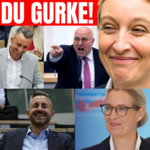A haunting silence now hangs over the Hockenheimring and the Nürburgring, two cathedrals of speed once synonymous with the thunderous roar of Formula 1 engines. For a nation that has given the sport its greatest champion in Michael Schumacher, a four-time world champion in Sebastian Vettel, and the modern era’s most dominant force in Mercedes-AMG, the absence of a German Grand Prix is more than just a scheduling omission—it’s a profound and telling wound. How did a country so deeply woven into the DNA of motorsport find itself on the outside looking in, watching as F1 chases new, glittering horizons in Miami, Las Vegas, and the Middle East? The answer is a sobering tale of how tradition, passion, and history have been sidelined in the relentless pursuit of profit and spectacle.

Germany is not just a former host; it’s a foundational pillar of Formula 1. The legacy began with the Silver Arrows of the pre-war era and was cemented by the unparalleled reign of Michael Schumacher in the 1990s and 2000s. His seven world titles didn’t just make him a national hero; they ignited a nationwide passion for F1, packing grandstands with seas of red Ferrari flags. An entire generation grew up with Schumacher as their idol, and the German Grand Prix became a pilgrimage site. The fervor was so immense that for a time, Germany hosted two races a year, with both the Hockenheimring and Nürburgring holding events.
The Schumacher era was followed by the rise of Sebastian Vettel, who carried the torch with his four consecutive championships, inspiring a new wave of fans. All the while, German engineering prowess was on full display with the Mercedes team, which has dominated the hybrid era, securing eight consecutive constructors’ championships. With automotive giants like Audi poised to enter the sport, Germany’s influence should be at its peak. Yet, the calendar tells a different story. The last true German Grand Prix was held in 2019. A one-off race in 2020, dubbed the Eifel Grand Prix, was merely a fleeting echo of a bygone era, a stopgap necessitated by a global pandemic. Since then, there has been nothing.
The culprit behind this erasure is not a lack of interest or empty seats. The German fanbase remains one of the most dedicated in the world. The real issue is the cold, hard logic of modern F1’s business model. The hosting fees demanded by Formula 1’s commercial rights holders have skyrocketed over the past two decades, a trend that began under Bernie Ecclestone and has been supercharged by the current owners, Liberty Media. For a traditional circuit like Hockenheim, which often relied on government subsidies and couldn’t justify astronomical costs, the financial demands became simply unsustainable. The organizers found themselves in an impossible position: pay a king’s ransom to host the race at a significant financial loss or lose it altogether. They were priced out of their own history.

This is where the stark contrast between Formula 1’s past and its present comes into sharp focus. While Germany was being squeezed out, new venues backed by immense government and private wealth were welcomed with open arms. Look at Singapore, a night race that, while visually spectacular, takes place on a street circuit that many drivers find underwhelming. Singapore secured its long-term place on the calendar by positioning its Grand Prix as a premier global tourism event, with the government investing heavily in marketing and infrastructure to create a week-long festival that attracts international business and high-net-worth individuals. It’s a powerful business model, but one that prioritizes commercial returns over the quality of the racing circuit itself.
Similarly, the decision to drop Malaysia’s iconic Sepang International Circuit, a track beloved by drivers for its challenging layout and thrilling races, further underscores this shift. Despite its racing pedigree, Sepang couldn’t compete financially and was axed from the calendar. In its place, F1 has turned to venues with deep pockets and a desire for global prestige. The glittering spectacle of the Las Vegas Grand Prix, the celebrity-filled Miami Grand Prix, and the controversial races in Saudi Arabia and Qatar represent the new face of Formula 1. These events are less about motorsport heritage and more about creating a high-end entertainment product for a global audience, blurring the lines between sport and show business.
F1’s CEO, Stefano Domenicali, has publicly stated his desire to see Germany return to the calendar, acknowledging its historical importance. However, his words ring hollow when the calendar is already bursting at the seams with 24 races, and the competition for a spot is fiercer than ever. Nations with seemingly bottomless financial reserves and strong political backing are lining up to pay top dollar. For Germany to re-enter this high-stakes game, it would require a monumental, unified effort—a national project bringing together the federal government, major corporations like Mercedes, Volkswagen, and Audi, tourism boards, and race promoters. It would need to adopt the Singapore model, transforming the race from a simple sporting event into a marquee national asset.

Without this level of investment and strategic alignment, Germany’s chances remain slim. It is a tragic irony that a nation whose automotive industry is a global powerhouse and whose drivers have defined entire eras of the sport is deemed commercially unviable. The situation raises uncomfortable questions about the very soul of Formula 1. Has the sport moved past the point where history and heritage matter? Is the loyalty of a passionate, long-standing fanbase now worth less than the promise of a lucrative new market?
The silence at Hockenheim is a powerful symbol of this new reality. It represents the abandonment of a legacy in favor of a more profitable, commercially driven future. While the spectacle of F1 grows larger and glitzier, many long-time fans can’t help but feel that something essential has been lost along the way. The soul of the sport, forged on historic tracks in the heartlands of motorsport, is at risk of being overshadowed by the bright lights and big money of its new global playground. And for Germany, the wait to hear the engines roar again may be a long and uncertain one.
News
Die Welt hat sich weitergedreht: Marie Fredriksson rechnet leise ab – 5 Stars, die sie im Stich ließen.
Der Klang von Roxette war der Soundtrack einer ganzen Generation. Mit Hits wie „It Must Have Been Love“ und „The…
Conny Froboess: Die bittere Wahrheit hinter der Traumkarriere – Im Alter trägt sie eine unheilbare Wunde.
Der Name Conny Froboess ist in Deutschland untrennbar mit einem Gefühl von Leichtigkeit und sonnigen Kindertagen verbunden. Wenn ihr größter…
DER WACKELDACKEL DER REPUBLIK: WIE MERZ’ „HERBST DER REFORMEN“ IN EINER EISZEIT DER STARRE ENDETE UND UNSERE ZUKUNFT VERPFÄNDET WIRD
Einbruch in die politische Wirklichkeit: Die bittere Bilanz nach dem Versprechen des Aufbruchs Mit großen Versprechungen begann die Zeit, die…
Bommes’ Nerven liegen blank: Unerwarteter Eklat in der letzten Folge von „Gefragt – Gejagt“ schockt die Fans
Ein Augenblick, der das harmonische Ende einer Quiz-Saison sprengte. Ausgerechnet in der vorerst letzten Ausgabe der erfolgreichen ARD-Show „Gefragt –…
Herzschlag-Finale in der Scheune: Friedrich und Laura trotzen dem TV-Kitsch mit dem ehrlichsten Liebesbeweis der Staffel
Der leise Moment, der lauter spricht als jede große Inszenierung Es war der Moment, auf den Millionen von Zuschauern der…
Kai Pflaume bricht sein Schweigen: Das 30-Jahre-Geheimnis hinter Deutschlands Vorzeige-Ehe und warum seine Ilke sein wichtigstes Korrektiv ist
Die deutsche Fernsehlandschaft hat viele Gesichter, aber nur wenige sind so konstant, so sympathisch und so untrennbar mit dem Gefühl…
End of content
No more pages to load












